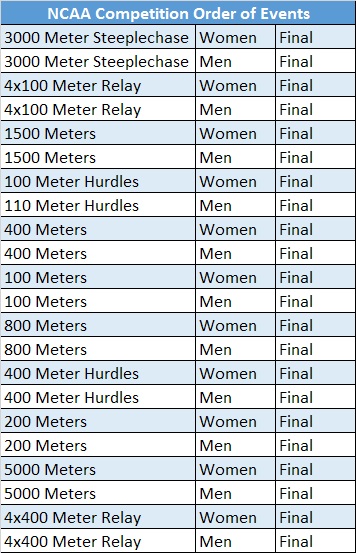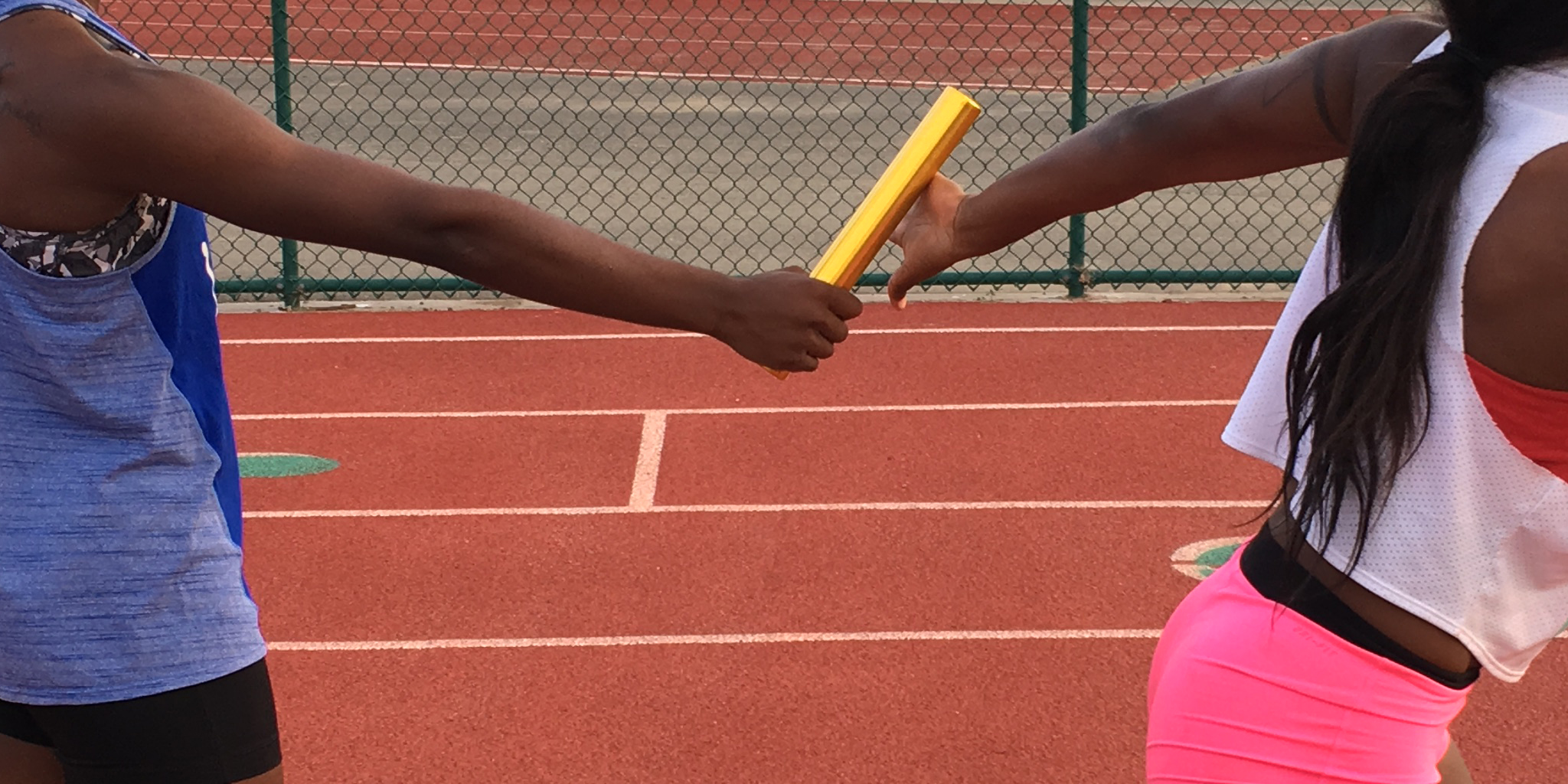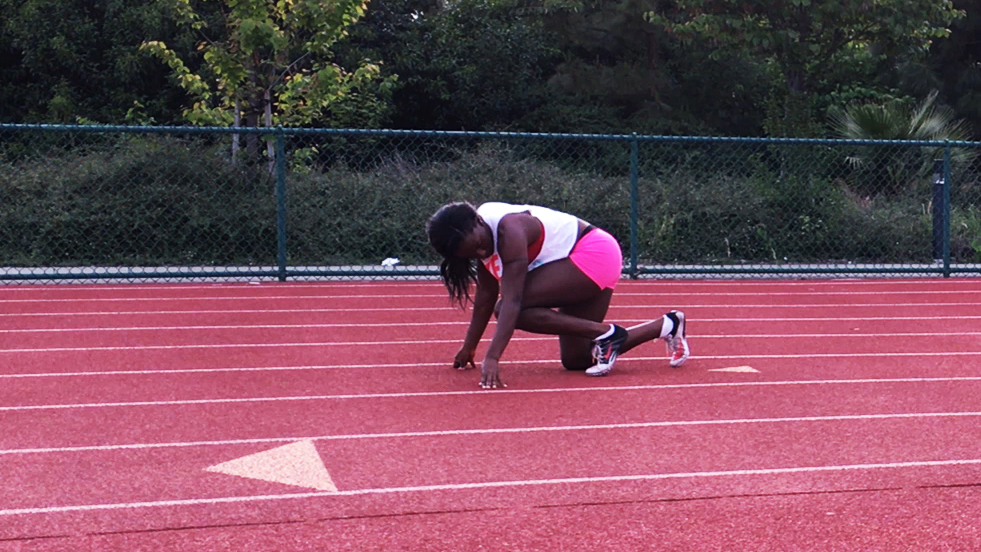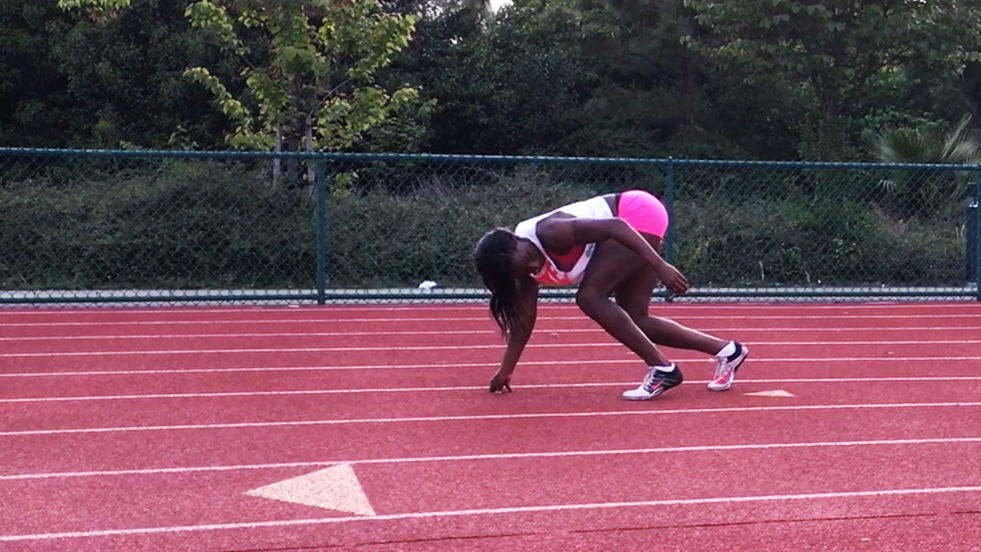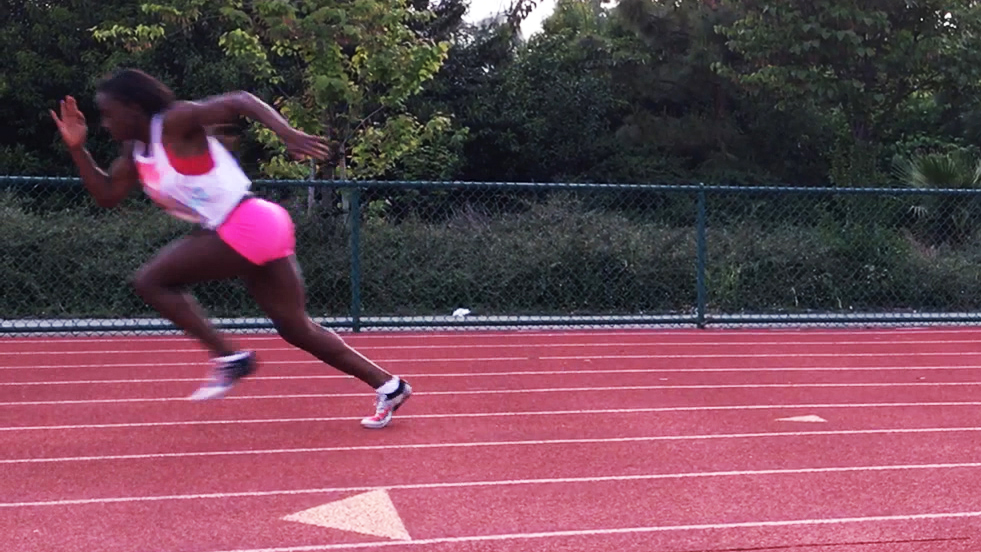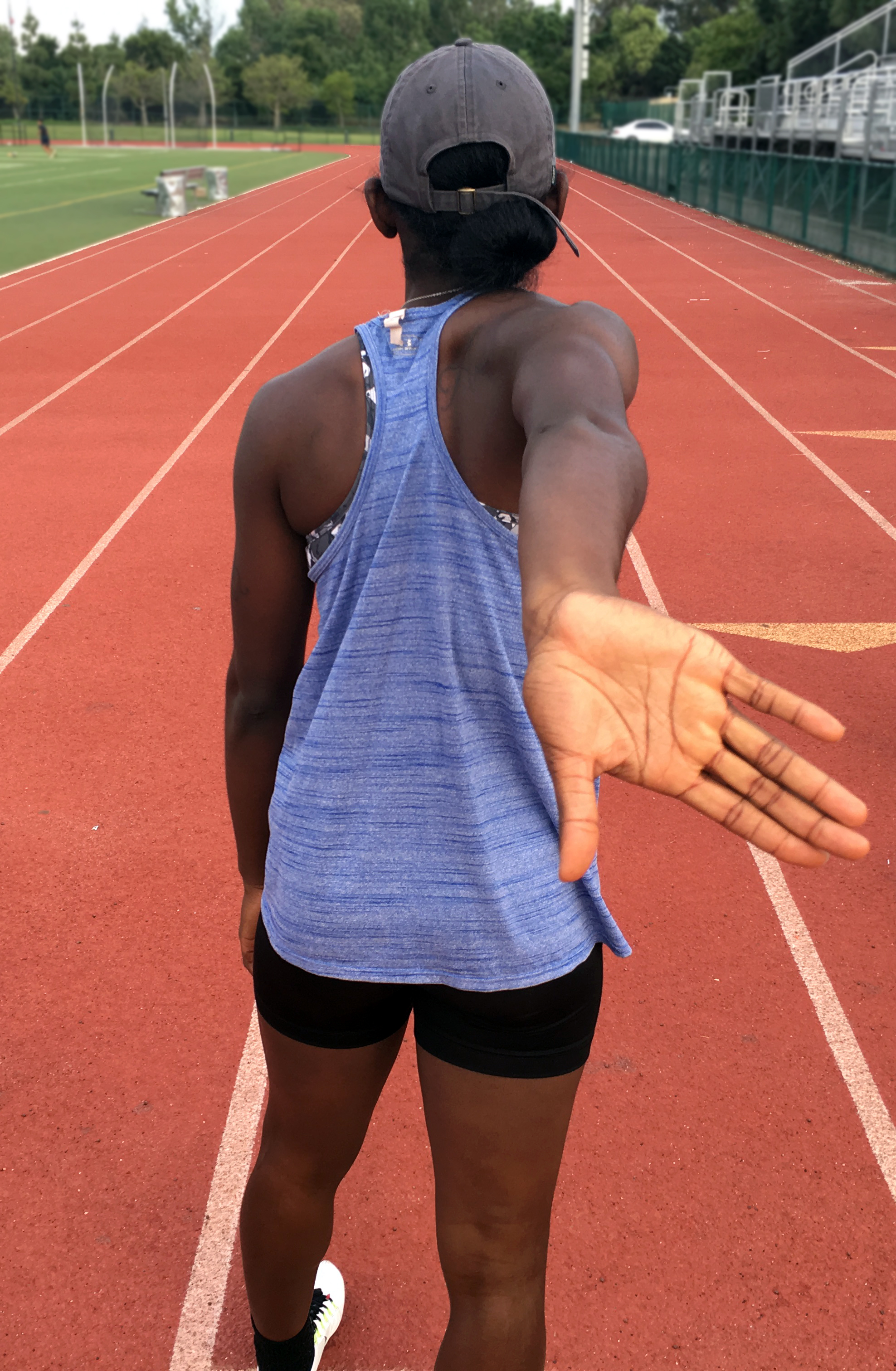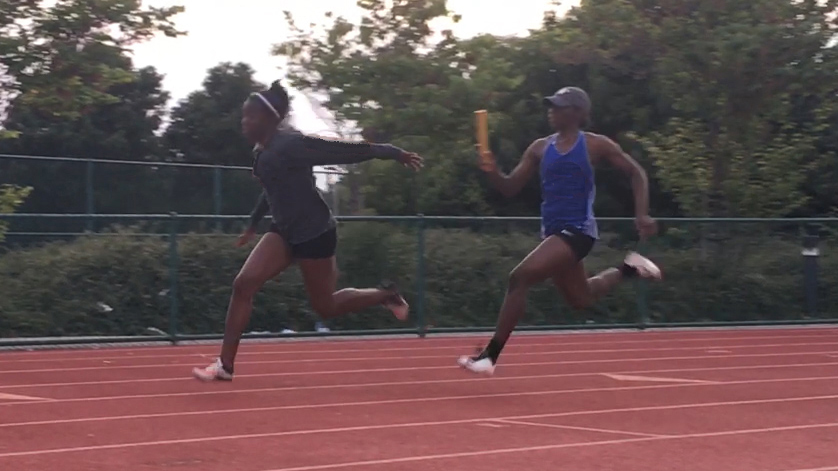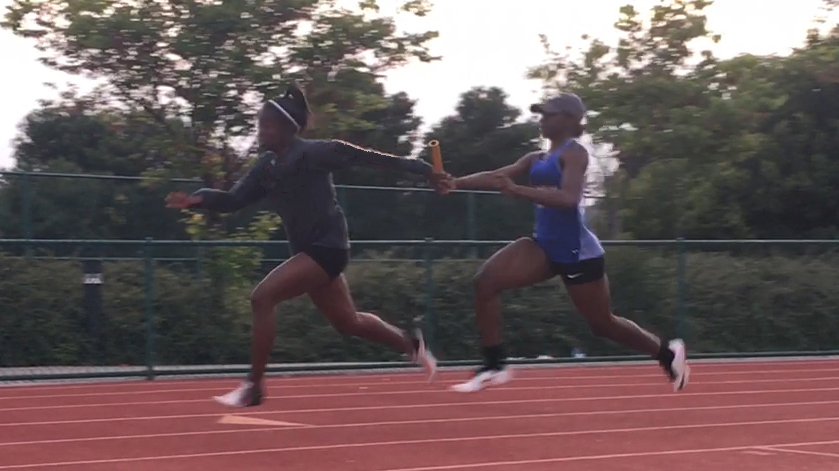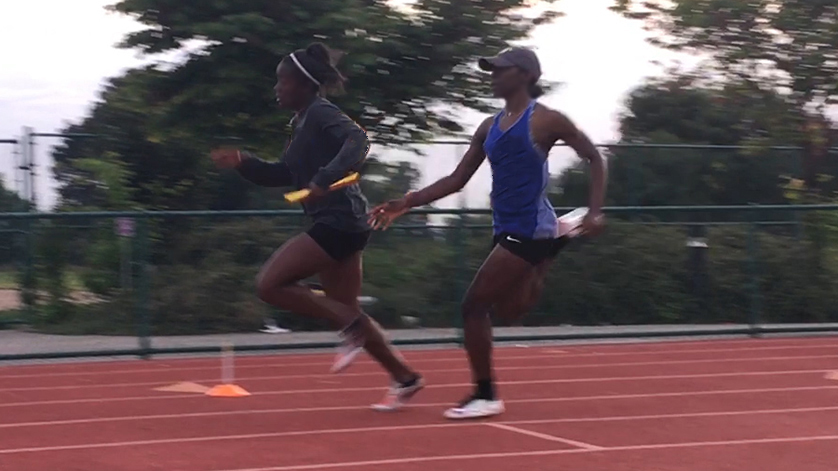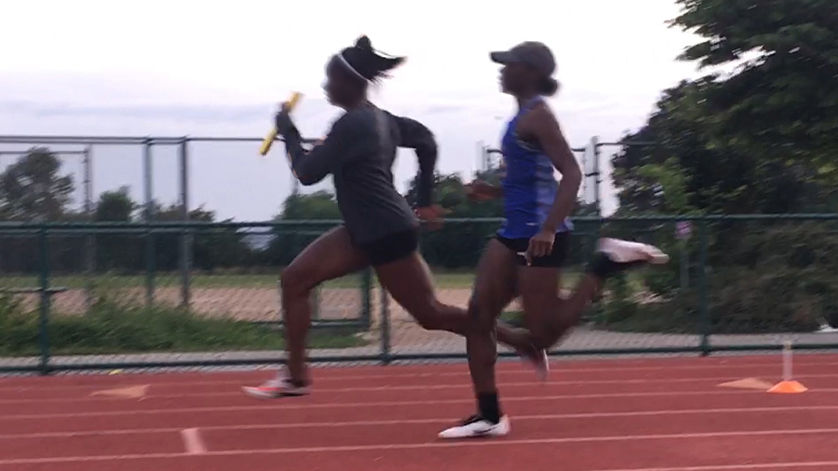The 4x100 Meter Relay
At any track and field competition, the relays represent an intricate and unique component of a largely individual sport. The relays—primarily consisting of the 4x100 meter and 4x400 meter events—are run in teams of four, with each member running an equal leg. Unlike all other open events, the success of a relay is largely contingent upon the equal success of each relay leg. Simply, a relay cannot find a desired competition result or high degree of success if each leg is not equally accounted and planned for.
Following a NCAA standardized model for a competition order of events, the 4x100 meter relay will be the second event following the 3000 meter steeplechase and the 4x400 meter relay will be the culminating event of the day. When following the National Federation of State High School Associations Track and Field standardized competition order of events, the 4x100 meter relay will commonly be in the middle before the 400 meters and after the 1600 meters and the 4x400 meter relay will be the culminating event of the day. The spacial designation of these two events allows for an individual athlete to potentially compete in both events.
Although the 4x400 meter relay will often see the inclusion of middle distance runners on the team, both relay events are qualified as sprint events and are routinely solely comprised of sprinters or hurdlers. When establishing and constructing a relay team, it is important to consider a multitude of factors, variables, and competition goals, ultimately in an attempt to answer the question—
Who should I put on my 4x100 meter relay team?
Each relay team should consist of the four best and fastest individual athletes. Given a definitive goal of running the fastest time possible, it is crucial that each athlete on a relay is chosen based on proven speed and previous competition results. While it is common for coaches to pick relay members based on external factors such as personality, commitment, or training age, it is crucial that the final decision—albeit taking these factors into consideration—is based upon achieving an eventual goal of competition success.
Relay Composition
Each leg of the 4x100 meter relay consists of four lengths of 100 meters—with each individual running the same distance. Although each leg is equal in distance, they are not equal from a strategic standpoint. Points to consider when deciding an order for your 4x100 meter relay include—
Who is your best starter?
Who has the fastest 100 meter time and 200 meter time?
Who is your best turn runner?
Which runner has the highest frequency?
Who is your most competitive athlete?
1st Leg Runner- Universally, the 1st leg of a 4x100 meter relay should be your best starter. The 1st leg of this relay is run out of blocks. As such, and to maintain a competitive advantage, the athlete with the best block start and acceleration should be employed here. Often this leg will be your team’s best 60 meter or 100 meter athlete.
2nd Leg Runner- Historically and as a commonly held belief amongst coaches, the 2nd leg of a 4x100 meter relay will be the strongest leg—or the fastest individual athlete. Coaches may often choose to strategically place their best 200 meter runner on this leg due to the belief that the 2nd leg will run the farthest, but this is false—each leg ought to run an equal distance of 100 meters. Placement of a runner on the 2nd leg should be based solely on two independent but related factors: Is this runner the fastest among the four total relay members and can this runner receive and hand off a baton with their left hand. If either question is unknown or directly doubted, a specific athlete may not or should not be considered for the 2nd leg.
3rd Leg Runner- In addition to the start, the 3rd leg of the 4x100 meter relay is run completely on a curve. As such, this runner should be an excellent curve runner and must have the ability to maintain a high velocity and consistent mechanics throughout the curve. Further considerations for this leg and in conjunction with the ability to run a strong curve, the 3rd leg should will often be your athlete with the highest stride frequency—a quality which can be tested for and analyzed through video and race footage. A strong 200 meter or 400 meter runner is often placed on this 3rd leg.
4th Leg Runner- Often and controversially, this leg is either your best athlete or your slowest. Methods of front-loading or back-loading a relay order may determine who runs this leg. Front-loading a relay equates to putting your athletes in descending order from best to worst and back-loading a relay equates to putting your athletes in ascending order from worst to best. Conversely and more comprehensively, this leg should an athlete who demonstrates calmness and composure in high-stress competition settings. This leg will often determine the final result of a race—either the maintenance of a lead or the passing of another team. As such, this leg should contain an athlete who can maintain poise and a strong competitive attitude (Lee, 2010).
Holding the Baton
For a matter of consistency, handoffs and baton-in-hand placement should follow this definitive pattern—
1st leg- Right Hand
2nd leg- Left Hand
3rd leg- Right Hand
4th leg- Left Hand
Under no circumstance should a baton be switched to a different hand or moved during a race. During the race, the baton should be firmly gripped towards the bottom to avoid accidental drops and to give the outgoing runner room to take the baton.
The Exchange Zones
The 4x100 meter relay handoff consists of two distinct and important zones—the exchange zone and the acceleration zone, or often referred to as the "international zone" or "fly zone". The exchange zone is a 20 meter segment—designated through large painted triangles—where the exchange will occur and the baton must switch hands. If the baton is not exchanged from the incoming runner to the outgoing runner within this 20 meter space, the relay will be disqualified.
The acceleration zone is a 10 meter segment—designated through a small triangle behind the exchange zone—where an outgoing runner may accelerate before receiving the baton from the incoming runner. The acceleration zone is paramount to a successful relay exchange in that it allows an outgoing runner to accelerate and achieve a degree of speed comparable to the incoming runner.
The overall goal of a 4x100 meter handoff is to exchange the baton without decreasing or losing speed and momentum. Through the appropriate and coordinated use of the 10 meter acceleration zone and the 20 meter exchange zone, this can and should be achieved.
Athlete Location in the Exchange Zone
Due to the specific and technical nature of the 4x100 meter relay, it is critical to note where an athlete stands when preparing to receive a handoff. Due to the coordination between a right hand handoff to a left hand reception and vice versa, it is crucial an incoming runner and outgoing runner are always on opposite sides of the particular assigned running lane.
1st Leg Starter- Baton in right hand—staying on the inside of the curve.
2nd Leg- Receives baton in left hand—staying on the outside of the lane on the straight.
3rd Leg- Receives baton in right hand—staying on the inside of the lane on the curve.
4th Leg- Receives baton in left hand—staying on the outside of the lane on the straight.
Further, an athlete preparing to receive a handoff should maintain a ready stance within the acceleration zone. If the athlete begins an acceleration pattern beyond this specific zone, the relay will be disqualified.
Proper Handoff Steps and Where to Exchange the Baton
It is the goal of the outgoing runner in a relay exchange to designate a proper distance and zone from which to begin an acceleration. Before the onset of any relay competition—preferably practiced and well-rehearsed first in training—the outgoing runner must complete two important tasks—
Determine a distance from the acceleration zone marker in which to begin an acceleration.
Create a “box” at this designated location from which to begin an acceleration.
The distance from the acceleration zone marker that designates the point in which the outgoing runner will begin their initial acceleration is dependent upon the predicted and demonstrated speed of the incoming runner and the predicted and demonstrated acceleration speed of the outgoing runner. Simply, the incoming runner should not "run-into" the outgoing runner and conversely, the outgoing runner should not "out-run" the incoming runner—correct spacing is key. Additionally, this distance is not static nor permanently fixed and may be moved closer or further at various points in the season. Each time a relay leg is changed or a simple practice session occurs, this distance and point on the relay should be appropriately monitored and adjusted accordingly.
The first mark in this process should be approximately between 26 and 30 steps back from the acceleration zone marker—steps contingent upon the individual athlete. The athlete should then accordingly place a marker at this mark. A box should then be made past this step consisting of the initial mark and a mark 2-4 steps past this first mark. The purpose of this box is to create a visual target zone for the outgoing runner to know when to start accelerating. Optimally, the outgoing runner should take-off when the incoming runner’s center of gravity breaks the plane of this box.
As the season progresses, the initial mark and the corresponding box may be extended further up to 29 and 30 steps. As training progresses and an individual athlete ideally becomes stronger, faster, and more proficient of an accelerator, corresponding relay zone markers may naturally and inevitably change.
Finally, a relay handoff should optimally occur in the middle of the 20 meter exchange zone. Practicing with this ideal in mind will allow for a greater margin of error in a competitive scenario. As long as the baton is exchanged within any part of the 20 meter exchange zone, it is considered legal. (Mackenzie, 2016)
The Exchange
The 4x100 meter relay exchange is one of the most critical and methodical aspects of the relay event. The overarching goal is to exchange the baton from the incoming runner to the outgoing runner without changing speed or slowing down. To achieve this, both the incoming and outgoing runner have distinct responsibilities.
The Incoming Runner- Maintain proper mechanics and velocity throughout the 100 meter segment and into the exchange zone. It is the role of the incoming runner to place the baton firmly and accurately into the outstretched arm of the outgoing runner. All baton exchanges should utilize the “Push Technique” where the incoming runner pushes the baton into the properly placed hand of the outgoing runner. A verbal cue of “stick”, “go”, or “hit” is often employed to signify to the outgoing runner when to extend their arm in preparation to exchange the baton.
The Outgoing Runner- It is the duty of the outgoing runner to properly set a marker and designated box to signify when to begin an acceleration. When the incoming runner breaks the plane of this box, the outgoing runner should immediately begin their acceleration pattern. This acceleration should always begin from a 3-point or 4-point stance—allowing a runner to start from a stand will generate multiple acceleration, reaction, and maximal velocity variables which may consequently disrupt a successful handoff. Once inside the exchange zone and if a verbal cue has been given, the outgoing runner should stretch their arm backwards with their palms facing out and their thumb turned down. The goal of the outgoing runner in this position is to maintain a still and non-moving target for the incoming runner to exchange the baton. Once the baton has been placed, the outgoing runner should immediately grab the button, pull it away, and continue to run their 100 meter leg. (American Sport Education Program, 2008)
The outgoing runner should stretch their arm backwards with their palms facing out and their thumb turned down
Competition Predictions
Predicting a competition 4x100 meter relay performance time is contingent upon numerous meet and competitive factors such as individual performance anxiety or stability, overall athlete and relay preparation, and individual athlete training considerations. Although there are several variables which can aid or hinder a successful 4x100 meter relay, it is important—as a coach—to attempt to mathematically predict a 4x100 meter relay time. Based upon statistics used by the University of Florida’s head coach Mike Holloway, a basic equation can assist a coach in predicting relay times. This equation, predictive in nature, should not be used as an absolute calculation, but merely as a predictive and calculated goal. (Holloway, 2015)
Relay Equation= Best 100 meter times (-) .24
Example 1: (10.24-10.20-10.30-10.10)
(10.00-9.96-10.06-9.86=39.88)
Example 2: (11.00-10.75-10.90-11.15)
(10.76-10.51-10.66-10.91=42.84)
Example 3: (12.00-11.75-11.90-12.20)
(11.76-11.51-11.66-11.96=46.89)
